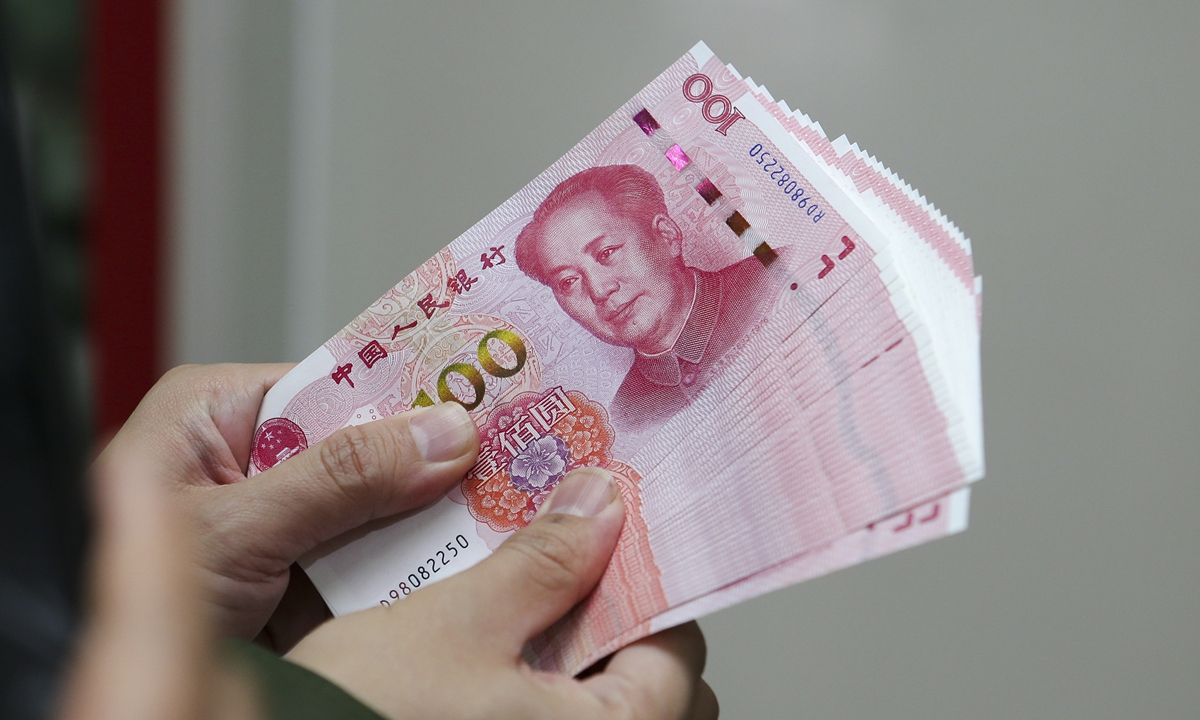
RMB Photo:VCG
The Chinese yuan fell below its previous low against the dollar in offshore markets on Wednesday. However observers said that the pressure causing the yuan to weaken against the dollar will ease over the long term as Chinese economy has shown resilience in recent economic data and the exchange rate will return to a pattern of two-way movement.
On Wednesday the offshore yuan breached the level of 7.27, falling over 400 basis points from the previous trading day. The yuan’s depreciation against the greenback accelerated in recent days after it showed signs of stabilization in early October amid the US Federal Reserve's interest rate rise cycle.
In short term the divergence between the US and Chinese central bank’s monetary stance has widened the yield gap between US Treasuries and Chinese government bonds, which has caused the yuan to depreciate against dollar, Dong Dengxin, Director of the Finance and Securities Institute of the Wuhan University of Science and Technology, told the Global Times on Thursday.
However, he noted the softening of the yuan is remaining within the anticipation of Chinese policymakers and should not cause panic in the market.
“Moderate depreciation is expected to stimulate Chinese export,” Dong said.
As Chinese economy has showed strong resilience and the impact of Fed’s interest rate hikes has been anticipated and absorbed by the market, the depreciation pressure of the yuan will gradually ease, China’s Futures Daily reported.
According to data released by the National Bureau of Statistics, fixed-asset investment, which represents the demand side, showed strong momentum in August. In particular, the growth rate of manufacturing investment and infrastructure investment both picked up in August, rising by 3 percentage points and 5 percentage points, respectively, from July.
Chinese banks kept benchmark lending rates unchanged on Thursday. The one-year loan prime rate (LPR) stayed unchanged at 3.65 percent, according to a statement by the People’s Bank of China Thursday. The five-year rate, a reference for mortgages, stayed at 4.3 percent.
The unchanged LPR rate is line with expectations as financial data of September showed that the domestic policies to help enterprises and stabilize growth have been effective, and the financing demand of the real economy has improved significantly, Zhou Maohua, a macroeconomist at Everbright Bank, told the Global Times on Thursday.
Global Times

